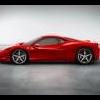Leaderboard
Popular Content
Showing content with the highest reputation on 04/09/2013 in all areas
-
9 pointsWell this is odd. My parents called me from back home to tell me my package from SSA came some time last week; only I haven't ordered anything. A 15" DCON was sent to me at my address and I didn't order it. I went to the order status for my account to see if someone had hacked my account and ordered one and... sent it to my house?? But that wasn't the case. Order #5455 and order #5182 were indeed for 15" DCON's, but I've already received them a long time ago. Aaron, what the heck do you want me to do with this?! My old man opened it up and there was nothing on the inside of the top of the box (i was hoping for a receipt to be there). Thanks!
-
7 pointsThey are getting old and can't run the business forever. So they were seeking someone honest and trustworthy to give the business to. Congratulations, you passed the test. You won Jake, you won! Now get in the Wonkavator and press the red button.
-
3 points
-
2 pointsmost of us have this,... to cover own ass against stupid people like well,... never mind
-
2 points
-
1 pointThose who have been following us have been waiting for something we have been talking about for a month or so.... I never really liked "hyping" but this will be all about hyping, hehe. Because our agenda is so large right now, that when things have effectively been tested to succeed, we are going to release the information either here or a new thread if this gets too crowded.. We are working on SO MANY THINGS right now that it will blow you away. We will not physically state, word for word, what has just happened today.. but we'll let some rumors go for a while until the official information is released. Many of you should\may know some of this stuff so it will be fun to see what happens with this.. Today, 4-8-2013- SPL-Lab, with extensive testing, has finally succeeded in gaining consistent results in mathematical calculations and real-world controlled environment tests to state that something has been "cracked". Today, 4-8-2013- LCD Meter- This device is our portable, or hand-held SPL meter that doesn't require a computer to operate. Just pull it out, plug it up and go! For the first time in Car Audio history has a company, who manufacturers, designs and sells sound measuring devices for this hobby for both personal and competition use SUCCEEDED in doing something with the LCD Meter that has NEVER been done before.. ever, ever ever.. All existing LCD Meter owners and future owners of LCD Meter will be able to obtain this new feature. I will at least tell you it's a new firmware update, but unlike others, this one will cost a small fee of $10. We have never charged for firmware updates in the past so why now? Because, in the past, all firmware updates were necessary to add measuring features that were expected to be there and confirm accuracy throughout the years of development. This new firmware update is not mandatory, it's optional hence the small fee. Lots of work went into the design and will give our customers that will, let's say, not have to purchase other products to help you manage your setup. Still in Progress- As of last week, we have finished testing a new version of our judging software with success.. We are about to start working on a MASSIVE database system for all leagues to Sync n Share there information within their own formats DIGITALLY. Paper trails, at league's discretion, can be a thing of the past. The launch of the judging software in full working order is still being planned for this year(minus a few possible bugs here n there). We have MORE MORE MORE MORE and MORE stages of innovation still on our agenda that we will not touch yet... The above information will be publicly released soon, within 1-2 weeks hopefully, officially. So in the meantime.. For those of you that think you know, you may be right, If you do not know.. be prepared for something crazy.
-
1 point
-
1 point
-
1 pointIt's sad to think that doing the right thing is so rare these days. Good to know integrity isn't dead, which is why I trust the people/advice I find here at SSA. Just another example of why SSA rocks! And you're killing me Impious! Hey Jake, you've got a golden ticket!
-
1 pointTime to send them back man, and start fresh from the factory. B+ for effort and troubleshooting though........HA!!
-
1 pointNot sure if im following you 100% but for android that would be Google Play https://play.google.com/music/listen
-
1 pointand I mysteriously have -14 rep..Wonder who could of done that. Is there a way to see which posts of mine have been voted down?
-
1 pointIt's mine.... No but really, it's good to see that there are still honest people out there.
-
1 pointYou MUST run more than a speaker is rated for to make it boom loud.
-
1 point
-
1 pointThey can be found towards the end of this [Last modified 07-Feb-07] SPEAKER DESIGN EQUATIONS 3.6 Bill McFadden 1993 [billmc@agora.rdrop.com] The most current version of this file can be found at: http://www.rdrop.com/users/billmc 1. Introduction This is a library of equations for designing ported and closed-box speaker enclosures. The equations were taken from speaker design books and technical papers by Richard Small and Neville Thiele (see references in tutorial section). They are designed for un-stuffed enclosures. Refer to the references for more information on stuffing. The equations are intended to be used with the HP48GX/SX multiple equation solver but can also be run with the solver built into the HP48SX. The binaries are provided in uu-encoded and ->ASC form. An RPL version is also provided, but does not include the binary variable Mpar needed by the multiple equation solver. The initial default speaker parameters are for the Eminence 18029 18" driver. I welcome any comments or refinements. 2. Variables The main directory is called SPKR and consists of two subdirectories: CB Closed Box Design PORTED Ported Box Design Running the multiple equation solver from either subdirectory will produce a menu of variables: Vas Volume of air having same acoustic compliance as driver suspension Qts Total driver Q at Fs Fs Resonant frequency of driver PEmax Thermally-limited maximum RMS input power SPL Efficiency of driver in dB SPL at 1W/1m Dia Diameter of driver xmax Peak displacement limit of driver diaphragm (1/2 of "throw") Vb Inside volume of enclosure Fb Resonance frequency of enclosure F3dB Half-power (-3 dB) frequency of loudspeaker system response Fmax Upper frequency limit of driver's piston range dBpeak Maximum peak or dip of loudspeaker system response Par Estimated displacement-limited acoustic power rating Per Estimated displacement-limited electrical power rating \Gno Driver efficiency (\Gn is Greek character eta) PeakSPL Thermally-limited RMS sound pressure level in passband Sd Estimated effective projected surface area of driver diaphragm Vd Peak displacement volume of driver diaphragm K1 Power rating constant K2 SPL rating constant The following additional variables are defined for the closed box case: Qb Total Q of system at Fb Amax Maximum amplitude of loudspeaker frequency response Vr Ratio of Vas to Vb Qr Ratio of Qb to Qts and Fb to Fs The following additional variables are defined for the ported box case: Dmin Minimum diameter of tubular vent to prevent excessive vent noise Dv Diameter of tubular vent Lv Length of tubular vent For the ported box case, the following apply: 1. Fb is the tuning frequency for the vent. 2. To use a square vent, enter the vent width times 1.13 or [2/SQRT(pi)] for Dv. 3. Design When designing a loudspeaker, two approaches may be followed. The easiest is to select a driver and design an enclosure for it. The other is to design the enclosure first, then select or build a driver that matches it. The choice between a closed box and ported box depends on several factors. Closed-box systems are the easiest to design and build and have the advantages of smaller box size, good low-frequency power handling, and superior transient response. Ported-box systems are more difficult to design because they require precise duct tuning. However, ported boxes have the advantages of superior bass response, good efficiency, and superior peak power handling in the passband. 3.1 Closed-Box Systems Closed-box systems are designed around one variable, box volume. Box volume is a function of the driver parameters and the system Q, Qb. To design a system with minimum peak or droop in the passband, Qb must be 0.707. The designer has the choice of setting Qb and solving for the box volume, or setting the box volume and solving for Qb. There is also the choice of assigning values to both of these variables and solving for one of the driver parameters. To design a closed-box system, enter the CB subdirectory and run the multiple equation solver. Alternatively, run the built-in HP48SX solver and select DESIGN.EQ as the current equation. Choose one of the following variables to solve for and assign values to the rest: Vas, Qts, Fs, SPL, Dia, xmax, Qb, and Vb. If you don't have all of the parameters available, purge the ones you don't know, so they'll be undefined and the solver won't attempt to use them. At a minimum, you will need to supply all but one of Vas, Qts, Fs, Qb, and Vb. Next, press <- ALL in the multiple equation solver to solve for all the unknowns. If using the built-in HP48SX solver, you will need to solve for each unknown individually, using NXEQ to sequence through the equations. 3.2 Ported-Box Systems Ported-box systems are a little more difficult than closed box systems because there is an additional variable, tuning frequency. The optimum tuning frequency depends on the driver parameters and box volume. To design a ported-box system, enter the PORTED subdirectory. Run the equation solver of your choice as described above and enter the driver parameters. Notice there is no Qb variable. At this point solving for the unknowns will automatically create a system with optimum passband response. Alternatively, you can specify values for Vb and/or Fb to see what effect they have on the system response. To find the minimum recommended diameter of a tubular vent for the enclosure, solve for Dmin. This is smallest diameter permissible to keep the air velocity below 5% of the speed of sound. Higher velocities can produce audible noise. To calculate the vent dimensions, enter either of Dv and Lv and solve for the other, keeping in mind the minimum recommended value of Dv. 3.3 Cabinet Design In the CST menu of the CB and PORTED subdirectories is a key labeled BCALC. Pressing this key runs the box calculator program. Don't run it directly from the SPKR subdirectory, or it will not work properly. The program is rather crude, and does not handle dual woofers, but is adequate for most designs. It works as illustrated by modeling the driver as a segment of a solid cone: _____ /| ^ / | | / | | / | | _____ / | | ^ | | | | | | | Rdia | | Dia | | | | __v__ | | | \ | | | \ | | | \ | | | \ | | | \| __v__ | | | |<-Depth->| | | To use, enter the driver's depth (distance from front of driver to back of magnet) and press DEPTH. Enter the rear (magnet) diameter of the driver and press RDIA. If you want the program to account for any extra volume taken up by bracing and other drivers, enter this volume and press XVOL. The program uses the driver's diameter as entered previously in the equation solver. The dimensions default to English units. The program will only accept real numbers as input; unit objects will cause an error. (I said it was crude.) To change units, store a value containing the new unit by typing 'name' STO, where name is one of Depth, Rdia, or Xvol. The units of the results should make sense based on the units of the data, but I won't guarantee it. You can also change the ratio of Height:Width:Depth used in the box calculation by pressing GOLD, 1.25:1, or CUST. GOLD selects the golden mean, 1.62:1:0.62 ((sqrt(5)+1)/2), which is the most common ratio. 1.25:1 selects another common ratio, 1.25:1:0.8. If you wish to use a custom ratio, enter it and press CUST. Each time you change a parameter using a menu key, the results will be recalculated and redisplayed. The display shows, from top to bottom, the driver's front diameter, the driver's rear diameter, the driver's depth, the extra volume taken up by other objects inside the cabinet, the total internal volume of the cabinet (including driver and extra volume), the ratio used to calculate the box dimensions, and the inside height, width, and depth of the cabinet. FIX 2 is the best display format to use with the default units. 3.4 Equalization of Closed-Box Systems There is a subdirectory in CB called EQUALIZER that will find the component values for an active equalizer that can extend F3dB of any closed box system to any desired lower limit (at the expense of efficiency and power handling--watch out!) See [11] for theory and circuit details. First, use the equation solver in the CB subdirectory to solve for the system as shown above. Next, enter the EQUALIZER subdirectory. Store the new desired cutoff frequency into F3dB, and press CIRCUIT. The component values will appear in the display. The values of R, C, N are chosen by the user to make the remaining component values realistic (see [11]). 4. Analysis 4.1 Frequency Response The equation solver generates three values related to frequency response, F3dB, Fmax, and dBpeak. F3dB is the frequency at which the acoustic output power of the speaker drops by half. Below this frequency, the response will drop 12 dB per octave for the closed box and 24 dB per octave for the ported box. Fmax is the upper limit of the driver's piston range. Piston range is defined as the range of frequencies for which the wavelength of sound is greater than the circumference of the driver's diaphragm. In this range, the driver's output is non-directional. Since this package models the driver as a piston, it is important to note that the equations are only accurate up to Fmax. In addition, because it is difficult to predict the driver's high-frequency behavior, it is a good idea to cross over to a smaller driver at or below Fmax. dBpeak is the magnitude of the frequency response peak or dip. For an optimal design, this value will be zero. To examine the frequency response in detail, enter the CB or PORTED subdirectory and run the plotter or built-in HP48SX solver. Select FREQresp from the equations catalog. F is the frequency variable, and dBmag is the response at that frequency. Using the solver you can solve for one in terms of the other. 4.2 Power Handling The equation solver generates power ratings called Par and Per. Par is the displacement-limited acoustic power rating. For the closed box, Par is the worst-case value for wide-band signals (all the way down to DC). For the ported box, it is an estimate based on the characteristics of musical signals. Per is the displacement-limited electrical RMS power rating based on Par. Because displacement-limited power handling is actually a function of frequency, the values of Par and Per only give small part of the picture. To examine power handling in detail, enter the CB or PORTED subdirectory and run the plotter or built-in HP48SX solver. Select POWresp from the equations catalog. F is the frequency variable, and Pmax is the maximum electrical input power at that frequency. Pmax is plotted first, followed by PEmax, the manufacturer's thermal RMS power rating. At some frequencies, Pmax will exceed PEmax. As frequency increases, Pmax can reach thousands of watts. Exceeding PEmax is permissible for short durations, but under no circumstances should you exceed Pmax even briefly or the driver may be physically damaged. Because Pmax is calculated with sine waves in mind, the peak power rating at a given frequency will be 2*Pmax. Using the ISECT function of the plotter, it is possible to determine the frequency range(s) over which it is safe to apply the full rated thermal power, PEmax, without damage from excessive displacement. Just place the cursor near the intersection of the curves and press ISECT in the FCN sub-menu. In the same manner, you can also use ISECT to find frequencies where the curves approach one another but don't touch. 4.3 Sound Pressure Level The equation solver generates a value for maximum SPL called PeakSPL. This is the maximum RMS output level of the system in the passband when driven by the thermally-limited maximum input power, PEmax. Like power handling, displacement-limited SPL is a function of frequency. To examine displacement-limited SPL in detail, enter the CB or PORTED subdirectory and run the plotter or built-in HP48SX solver. Select SPLresp from the equations catalog. F is the frequency variable and SPLmax is the displacement-limited SPL at that frequency. SPLmax is plotted first, followed by the thermally-limited RMS sound pressure level. As before, for frequencies where SPLmax exceeds the thermally-limited SPL, the maximum SPL may be limited to a value in between, depending on the peak-to-average power ratio of the input signal. Again, ISECT can be used to find the frequency or frequencies at which the displacement- and thermally-limited SPL ratings are equal. 4.4 Analysis of Equalized Closed-Box System Using an equalizer to extend the bass response of a closed-box system does not come without costs. For each octave of bass extension, a 12 dB boost is necessary (and requires 16 times as much power). To evaluate these costs, two equations are provided in the EQUALIZER subdirectory: FREQresp and POWresp. These function like their counterparts in the CB and PORTED subdirectories, but take into account the effects of the equalizer. Because I took the equations right out of the article [11] without any optimization for speed, these equations run very slowly. However, I left out the units wherever possible so the equations would run faster. FREQresp calculates the response of the equalizer, rather than the system, to give you an idea of the amount of boost required to equalize the system. The greatest boost occurs at the new F3dB. POWresp calculates the equivalent power handling of the system. At each frequency, Pmax is reduced by the amount of boost the equalizer provides. This is useful to see what the power handling of an equivalent, un-equalized system would be. There is no equation for maximum SPL vs. frequency because it is the same as the un-equalized system. 5. Design Equations Here are the equations used by the speaker design library. All values have SI (mks) units. ^ denotes exponentiation. LOG() is base 10. 5.1 Constants pi = 3.14159265359 c = speed of sound in air (345 m/s) Ro = density of air (1.18 kg/m^3) 5.2 Closed-Box Systems Vb = Vas/Vr Fb = Qr*Fs F3dB = Qr*Fs*((1/Qb^2-2+((1/Qb^2-2)^2+4)^0.5)/2)^0.5 Fmax = c/(pi*0.83*Dia) dBpeak = 20*LOG(Amax) Par = K1/Amax^2 Per = Par/(\Gno) \Gno = 10^((SPL-112)/10) PeakSPL = SPL+10*LOG(PEmax) Sd = pi*(Dia*0.83)^2/4 Vd = Sd*xmax Amax = Qb^2/(Qb^2-0.25)^0.5 for Qb >(1/2)^0.5, 1 otherwise K1 = (4*pi^3*Ro/c)*Fb^4*Vd^2 K2 = 112+10*LOG(K1) Vr = Qr^2-1 Qr = (1/Qts)/(1/Qb-0.1) Frequency-dependent equations: Fr = (F/Fb)^2 dBmag = 10*LOG(Fr^2/((Fr-1)^2+Fr/Qb^2)) Pmax = K1*((Fr-1)^2+(Fr/Qb^2))/(\Gno) SPLmax = K2+40*LOG(F/Fb) Thermally-limited RMS SPL = PeakSPL+dBmag 5.3 Ported Box Systems Vb = 20*Qts^3.3*Vas Fb = (Vas/Vb)^0.31*Fs F3dB = (Vas/Vb)^0.44*Fs Fmax = c/(pi*0.83*Dia) dBpeak = 20*LOG(Qts*(Vas/Vb)^0.3/0.4) Par = 3*F3dB^4*Vd^2 Per = Par/(\Gno) \Gno = 10^((SPL-112)/10) PeakSPL = SPL+10*LOG(PEmax) Dmin = (Fb*Vd)^0.5 Lv = 2362*Dv^2/(Fb^2*Vb)-0.73*Dv Sd = pi*(Dia*0.83)^2/4 Vd = Sd*xmax K1 = (4*pi^3*Ro/c)*Fs^4*Vd^2 K2 = 112+10*LOG(K1) Frequency-dependent equations: Fn2 = (F/Fs)^2 Fn4 = Fn2^2 A = (Fb/Fs)^2 B = A/Qts+Fb/(7*Fs) C = 1+A+(Vas/Vb)+Fb/(7*Fs*Qts) D = 1/Qts+Fb/(7*Fs) E = (97/49)*A dBmag = 10*LOG(Fn4^2/((Fn4-C*Fn2+A)^2+Fn2*(D*Fn2-B)^2)) Pmax = (K1/\Gno)*((Fn4-C*Fn2+A)^2+Fn2*(D*Fn2-B)^2)/(Fn4-E*Fn2+A^2) SPLmax = K2+10*LOG(Fn4^2/(Fn4-E*Fn2+A^2)) Thermally-limited RMS SPL = PeakSPL+dBmag
-
1 point
-
-1 pointsCurrently have a Hifonics 1500D running 2 (Blown) RE Audio REX10D4(Was looking for an excuse to buy new subs so I had a little fun) and KICKER DS693(Front) DS65(Rear) in the doors.
-
-1 pointsYeah I've pretty much got it narrowed down to Sundown just gotta pick which series to go with. (You'll see a thread with me explaining details of my setup and asking for suggestions instead of picking what evers cheapest and having a shitty system)
-
-1 pointsSup guys always love car audio but previously was into more entry level stuff trying to step it up a bit
-
-1 pointsAlright well since my amp @ 2 ohms pushes 1000 watts and @ 1 ohm pushes 1500 which should I go with overpower or under power? (This is going off the amps specs and not the actual output of the amp as I have yet to test it) Considering based on this it kinda chooses whether to go with the D4 or D2 I Know once I add an additional 2 10"s to my setup I'll have to upgrade the amp but currently Im only looking to upgrade my subs
-
-1 pointsI mean I've never actually heard Sundowns in person, is there difference between the E10 SD2 and SA10 Extremely noticeable ? I'm not trying to be cheap, but at the same time I'm not trying to break the bank for minimal gain.
-
-1 pointsHey guys last night I blew my REX10D4's in my 2002 Jeep Grand Cherokee Laredo So here my current situation, I have Kicker DS693's in the front doors and DS65's in the back doors. I was running the REX10's with a Hifonics 1500D @ 4 Ohms which was overpowering them a bit but meh happens.(Amp is 1 Ohm stable) Alright so heres the dilemma I'm looking at either SA10s or E10s.(I listen to Rap/Rock) Currently I have a 3/4 MDF 2.0 cu ft box with 2 separate chambers and L ports tuned to 38 Hz (Also have a Sealed box laying around with .69 cu ft per chamber I believe) Now I'm only currently purchasing 2 with the intent of purchasing another 2 in the future. But I'm unsure which ones will best fit my setup. (Sorry for the kind of broken sentences but was trying to provide details without giving a wall of text, I'm sure even with trying to provide everything I've still forgotten something though)
-
-1 pointsI have heard bad things and had a bad experience with powerbastards 200-220amp alts especially the universal fit ones
-
-3 points


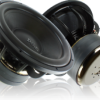
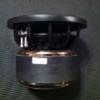

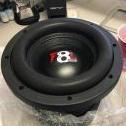
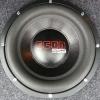
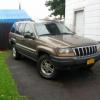
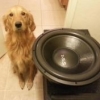
.jpg.ea8ac89a2ec7f49de0b9e4027c74f515.thumb.jpg.dc61d2e06476e189721027d6a6eb6027.jpg)
